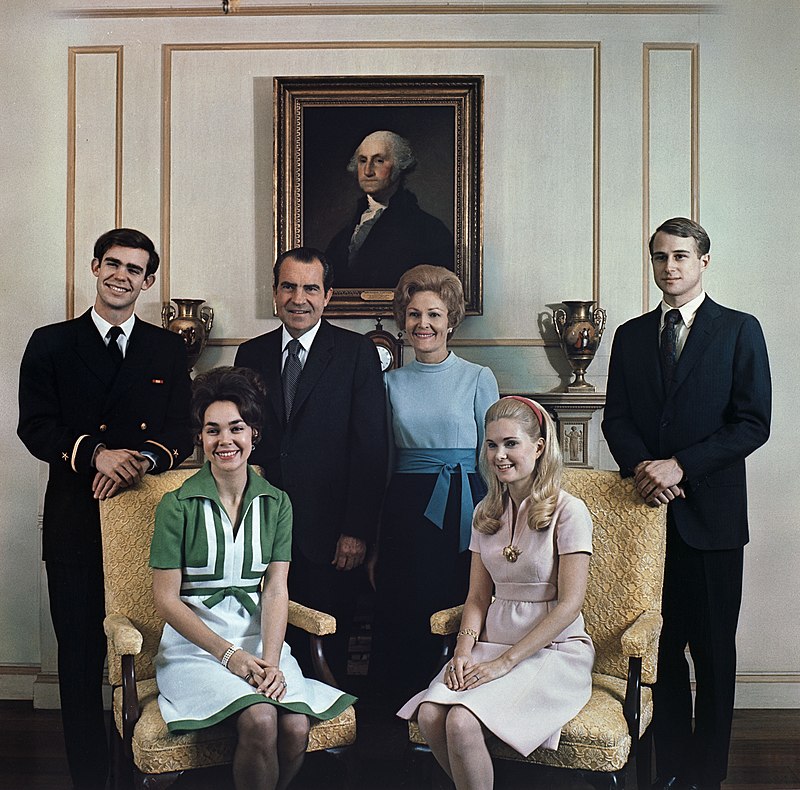Pat began working at a young age when her mother died when she was just 12 years old. She served as a bookkeeper and janitor in a nearby bank while also assisting her father on the family farm.
Pat graduated from Excelsior High School in 1929. To pay for a year at Fullerton Junior College, she worked at a bank. She was hired to move an elderly couple from California to New York City in 1932, where Pat worked as a clerk and a hospital X-ray technician for two years. When she returned to California, she supplemented her savings by working several jobs before attending the University of Southern California as a merchandising student, where she graduated with honors in 1937.
After graduation, Pat’s first job was as a business education teacher at Whittier Union High School, where she earned $1,800 per year. Whittier Union High School was situated on the quiet Quaker community’s main street at the foot of the La Puente Hills.
Her curiosity in drama started when she received $25 for a walk-on role as an extra in the film “Becky Sharp” while working at USC. She joined the Whittier Little Theater club in addition to directing the high school shows. She knew Richard Nixon, a young lawyer who had just graduated from Duke University Law School in Durham, North Carolina, at the time.
On June 21, 1940, the couple married at the Mission Inn in Riverside, California, after a two-year courtship. The couple drove to Laredo and then down the Pan American Highway to Mexico City for their honeymoon. While Mrs. Nixon continued to teach and Dick Nixon practiced law, they returned to Whittier and lived in an apartment above a garage.
Mr. Nixon worked as an attorney in the Office of Emergency Management in Washington, D.C., for a year before joining the Navy. Richard Nixon spent two months at Quonset, Rhode Island, before being commissioned as a lieutenant in the Navy in March 1942 and sent to Ottumwa, Iowa, to aide the officer in charge of establishing a Naval Air Base. On the other hand, Pat worked in a bank in Ottumwa before moving to San Francisco, California, to serve as an economist for the Office of Price Administration. At the same time, her husband was stationed in the South Pacific. Lt. Nixon returned to the United States after 14 months in the South Pacific, and they relocated to Baltimore.
Nixon stood for a seat in the United States House of Representatives in 1946, and she voted for him. Their first daughter Patricia, also known as Tricia, was born the same year. Julie, their second and final daughter, was born two years later, in 1948. She was an integral part of his campaign and conducted extensive research on his political opponent, Jerry Voorhis. She also wrote and circulated the campaign leaflets for him.
Richard Nixon’s life was rapidly changing. He went from becoming a member of the United States House of Representatives to a member of the United States Senate after just six years. He ultimately rose to the position of Vice President of the United States.
She stayed by her husband’s side during all of his election campaigns, eager to host interviews, outdoor rallies, fundraiser dinners or teas, and all of the other media events that had become a regular part of her life. She often gave spontaneous speeches on occasion.
She once said that she was exceedingly loyal to Nixon despite her dislike for politics, especially the interference into their personal lives.
For eight years, she served as the vice president’s wife in different capacities. She and her husband visited 53 nations, and President Eisenhower often sent them as goodwill ambassadors to foreign countries because of her charming and encouraging personality.
Pat Nixon became the First Lady of the United States in 1969 after Richard was elected President of the United States, and she held the position until 1974. As First Lady, she became a picture of honor. Around the same time, Pat did not want to be weighed down by the position’s responsibilities. She desired to follow the “personal diplomacy” law, which required her to fly and meet with citizens from other countries and states.
As First Lady, she championed a cause known as “volunteerism.” She urged people to volunteer at hospitals, recovery centers, and public groups to resolve local social problems.
Her second volunteerism tour took her 4,130 miles through the United States, where she helped dispel the myth that all students were opposed to the Vietnam War. She was also a member of many volunteer organizations, including the ‘Women in Community Services’ and the ‘Urban Services League.’ She was a strong supporter of the Domestic Voluntary Service Act of 1973, which encouraged volunteerism and gave incentives to volunteer organizations.
She always tried to protect her children from publicity and relentless attention, leading a very private life.
They moved into La Casa Pacifica in San Clemente, California, after leaving the White House. She was hardly seen in public and only gave television interviews on rare occasions.
Pat had a stroke in 1976, which left her almost paralyzed on her left hand. She eventually lost all of her mobility by undergoing extensive physical therapy. After that, they temporarily relocated to Manhattan before moving to Saddle River, New Jersey, to be closer to their children and grandchildren.
She died in her Park Ridge home on June 22, 1993, at the age of 81, accompanied by her husband and two children. The funeral was held on June 26, 1993, where a large crowd gathered to pay their goodbyes to her on the grounds of the Richard Nixon Library.
“Even though people can’t speak your tongue, they can say whether you have love in your heart,” her tombstone reads.
US Presidents | ||

